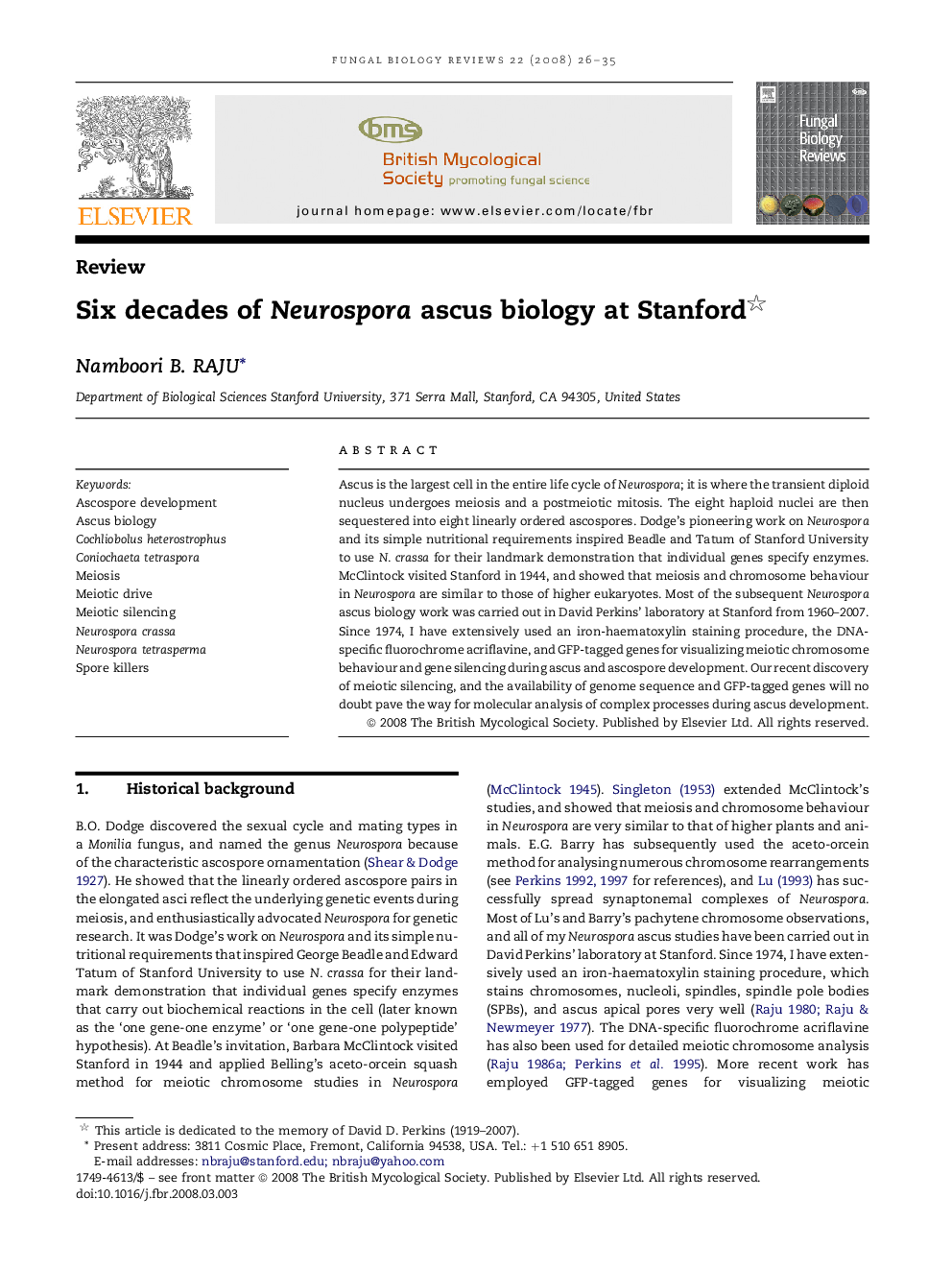| Article ID | Journal | Published Year | Pages | File Type |
|---|---|---|---|---|
| 2180569 | Fungal Biology Reviews | 2008 | 10 Pages |
Ascus is the largest cell in the entire life cycle of Neurospora; it is where the transient diploid nucleus undergoes meiosis and a postmeiotic mitosis. The eight haploid nuclei are then sequestered into eight linearly ordered ascospores. Dodge's pioneering work on Neurospora and its simple nutritional requirements inspired Beadle and Tatum of Stanford University to use N. crassa for their landmark demonstration that individual genes specify enzymes. McClintock visited Stanford in 1944, and showed that meiosis and chromosome behaviour in Neurospora are similar to those of higher eukaryotes. Most of the subsequent Neurospora ascus biology work was carried out in David Perkins' laboratory at Stanford from 1960–2007. Since 1974, I have extensively used an iron-haematoxylin staining procedure, the DNA-specific fluorochrome acriflavine, and GFP-tagged genes for visualizing meiotic chromosome behaviour and gene silencing during ascus and ascospore development. Our recent discovery of meiotic silencing, and the availability of genome sequence and GFP-tagged genes will no doubt pave the way for molecular analysis of complex processes during ascus development.
